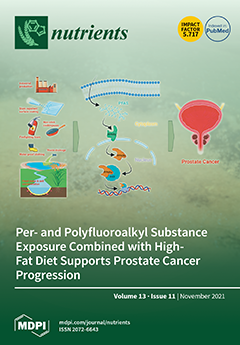Open AccessArticle
Improved Quality of Life, Fitness, Mental Health and Cardiovascular Risk Factors with a Publicly Funded Bariatric Lifestyle Intervention for Adults with Severe Obesity: A Prospective Cohort Study
by
John Francis Brazil, Irene Gibson, Denise Dunne, Lisa B. Hynes, Aisling Harris, Mustafa Bakir, Dylan Keegan, Brian McGuire, Mary Hynes, Chris Collins, Siobhan Foy, Suzanne Seery, Paul Bassett, Colin Davenport, Jennifer Jones and Francis M. Finucane
Cited by 13 | Viewed by 5554
Abstract
Background: Lifestyle modification is the cornerstone of management for patients with severe and complicated obesity, but the effects of structured lifestyle programmes on quality of life, anxiety and depression scores and cardiovascular risk factors are not well-described. We sought to describe changes in
[...] Read more.
Background: Lifestyle modification is the cornerstone of management for patients with severe and complicated obesity, but the effects of structured lifestyle programmes on quality of life, anxiety and depression scores and cardiovascular risk factors are not well-described. We sought to describe changes in self-reported quality of life and mental health-related outcomes as well as cardiovascular risk factors in patients completing a 10-week multidisciplinary lifestyle-modification programme. Methods: We conducted a prospective cohort study of all patients referred from our bariatric service who completed the programme between 2013 and 2019. In addition to weight, body mass index (BMI), blood pressure, HbA1c, lipid profile and functional capacity, we quantified health-related quality of life using the Dartmouth COOP Questionnaire and the European Quality of Life Questionnaire Visual Analogue Scale (EQVAS) and mental health using the Hospital Anxiety and Depression Scale (HADS). Results: Of 1122 patients who started the programme, 877 (78.2%) completed it and were included in per protocol analyses. Mean age was 47.3 ± 11.9 years, 66.9% were female, 34.8% were in full- or part-time employment and 69.4% were entitled to state-provided medical care. BMI decreased from 47.0 ± 7.8 to 46.2 ± 7.8 kg m
−2 and weight decreased from 131.6 ± 25.5 to 129.5 ± 25.4 kg (both
p < 0.001). There were significant reductions in anxiety and depression scores and improvements in all Dartmouth COOP domains. The EQVAS score increased from 52 ± 22 to 63 ± 19 (
p < 0.001). Small but statistically significant reductions in LDL cholesterol, systolic blood pressure and HBA1c were also observed. Conclusions: Adults with severe and complicated obesity completing a specialised bariatric lifestyle-modification programme showed significant improvements in self-reported mental health and quality of life, in addition to reductions in cardiovascular risk factors.
Full article






